BCHP 10 (Seleucid Accessions Chronicle)
The Chronicle concerning the reign of Antiochus II, the accession of Seleucus II and the accession of Seleucus III (the "Seleucid Accessions Chronicle"; BCHP 10 or ABC 13) is one of the Mesopotamian chronicles written in ancient Babylonia in the Hellenistic Period.
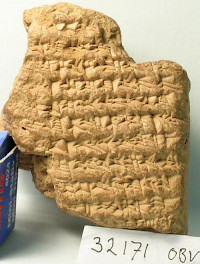
The Chronicle concerning the reign of Antiochus II, the accession of Seleucus II and the accession of Seleucus III (the "Seleucid Accessions Chronicle"; BCHP 10 or ABC 13) is one of the Mesopotamian chronicles written in ancient Babylonia in the Hellenistic Period. The cuneiform tablet (BM 32171 = 76-11-17, 1898) is in the British Museum.
On this webpage, a new reading is proposed; the official publication will be in I.L. Finkel, R.J. van der Spek, R. Pirngruber, Babylonian Chronographic Texts from the Hellenistic Period (2020; = BCHP; Writings of the Ancient World).
Previous editions
- Grayson 1975 (ABC no. 13): 122-123, photo's Plate xix; copy plate iv;
- Glassner 1993 (CM no. 34): 212;
- Del Monte 1997 (TBE): 200-202.
Description of the tablet
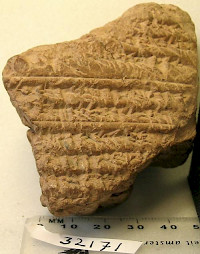
The fragment is the small remainder of the lower right side of a larger tablet. The maximum preserved length is 6.5 cm, the maximum width of the obverse is 4.8 cm. The thickness of the right edge, which is partly preserved, is 2.8 cm., the broken left edge is 3.3 cm. The length of the longest line on the reverse is 5.5 cm. Thanks to the fact that line 6' can be reconstructed, we have an idea about the entire width of the tablet and the approximate number of lost signs. Some lines continue on the right edge. This is indicated by a vertical stroke (|) in the transliteration.
General commentary
The year numbers of this chronicle are lost. Yet there are some clues for dates. The clearest statements are lines 7' and 8' of the reverse. Here we read about a king, son of an Antiochus, followed by a Seleucus, son of a Seleucus, who ascended the throne. For the king of line 7' we have the following options:
- Antiochus II Theos, son of Antiochus I Soter;
- Seleucus II Callinicus, son of Antiochus II;
- Antiochus IV Epiphanes, son of Antiochus III the Great;
- Antiochus V Eupator, son of Antiochus IV.
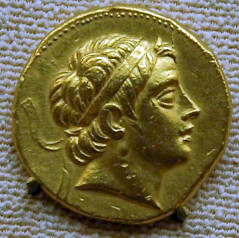
Since line 8' mentions a Seleucus, son of Seleucus, one is compelled to regard the king of line 7' as Seleucus II. It also seems very clear that the death of Seleucus II is reported and the subsequent mourning (about his death) in Babylonia in this very line. Line 8' then reports the succession to the throne of his son Seleucus III Keraunos in the same year. It must all have happened before the month Tebêtu (month X). As the Babylonian King List of the Hellenistic Period assigns year 87 as the first full year of Seleucus III, the death of Seleucus II and ascension to the throne of Seleucus III must have occurred in SE 86 before month X = before 14 January 225 BCE.note
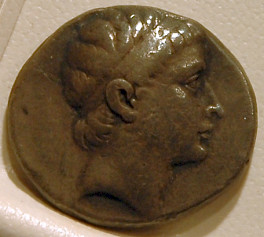
Now we can turn to the previous section (lines 5'-6'). This entry concerns a Seleucus, not (yet) king, son of PN, who ascends the throne. The event must be placed before SE 86. Since no co-ruler is attested for the reign of Seleucus II, the Seleucus who obtained the throne can be no other than Seleucus II.
The first document dated to Seleucus II is a tablet from Uruknote dated to 22 Simanu (III) SE 67 = 11 July 245. According to the colophon of the Astronomical Diary concerning month I-VI of SE 66, Seleucus succeeded immediately to his father Antiochus II in month V.note
The Babylonian king list attributes year SE 67 as the first full year of Seleucus II, which means that Seleucus II ascended the throne the year before. All this suggests that lines rev. 5'-6' must refer to SE 66 or 246/5 BCE. The main problem with this conclusion is that the eventful year of SE 66 only contained this dry information, a year which was the start of the Laodicean war (246-241) and the invasion of Ptolemaic troops into Babylon, which is reported in the Invasion of Ptolemy III Chronicle; BCHP 11.
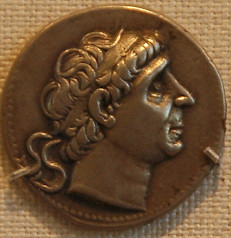
Since the reverse of the tablet does not treat consecutive years (viz. years 66 and 86 SE), it is not necessary to assume that the events of rev. 1'-4' refer to SE 65. It may well treat events of years earlier. The same is true for the obverse. Since, however, Seleucus, the epistates of Seleucia, is mentioned in obv. 5', whom we know to have been in office during the Ptolemaic invasion in Babylonia in 246 (Invasion of Ptolemy III chronicle; BCHP 11, r. 9'), we should not place the events too early. Hence, events of the reign of Antiochus II will be at issue. In that case the "Antiochus, son of [PN]" of line obv. 9' will be Antiochus Hierax or Antiochus, son of Antiochus II and Berenice Phernephorus. The chronicle deals in the preserved section with local affairs (the epistates of Seleucia, Babylon and its temple Esagila, the Lamassu-rabi Gate). This makes it difficult to find clues about dates.
Obverse
[Obv.1'] [.. .. .. .. .. .. .. .. .. .. .. ..] /x\ [.. .. .. ..]
[Obv.2'] [.. .. .. .. .. .. .. .. .. .. .. ..] his [...] (was?) ki[lled? .. .. ..]
[Obv.3'] [.. .. .. .. .. .. .. .. .. .. siege eng]ines? in great number [.. .. ..]
[Obv.4'] [.. .. .. .. .. .. .. .. .. .. .. .]. .. of the land, which (are) in the city of Antio[ch]
[Obv.5'] [.. .. .. .. .. .. .. .. .. .. .. .]. .. Seleucus, the epistates
[Obv.6'] [of Seleucia which is on the Euphrat]es! and the King's Canal, its boundary with
[Obv.7'] [.. .. .. .. .. .. .. .. .. .. .. ..]x with him/it establishedsg and Menes (Eumenes?)
[Obv.8'] [.. .. .. .. .. .. .. .. .. .. .. ..]....... Antiochus, son of
[Obv.9'] [.. .. .. .... .. .. .. .. .. .. .. ] killed/defeatedsg [by the] sword?. Numerous people
[Obv.10'] [.. .. .. .. .. .. .. .. .. .. .. .. Esa]gila. A lamentation priest from
[Obv.11'] [.. .. .. .. .. .. .. .. .. .. .. to Seleuc]ia? fledsg and
[Obv.12'] [.. .. .. .. .. .. .. .. .. .. .. .. .. .. ..]x. Month Ulûlu (VI). That month
Reverse
[Rev.1'] [Lacuna]
[.. .. .. .. .. .. .. .. .. .. .. .. .. .. .. .. .. .. ..] in Babylo[n .. .. ..]x
[Rev.2'] [.. .. .. .. .. .. .. .. .. .. .. .. .. .. .. .. .. ..] x they wrote/plundered
[Rev.3'] [.. .. .. .. .. .. .. .. .. .. .. .. .. .. .. .. ..] the Lamassu-rabi Gate and with him
[Rev.4'] [.. .. .. .. .. .. .. .. .. .. .. .. .. .. .. ] x inside Esagila they set up.
------------------------------------------
[Rev.5'] [Year 66? (246/5 BC). Month MN. Tha]t [month] I heard as follows: "Seleucus, son of
[Rev.6'] [Antiochus, (was) in the city of Si]ttakê?, a renowned city, and he [ascen]ded the roy[al] throne."
------------------------------------------
[Rev.7'] [Year 86? (226/5 BC) . Month MN. That month, the nth day, Seleucus, the k]ing, son of Antiochus, x[died. A mourning] was held.
[Rev.8'] [.. .. .. .. .. .. .. .. Seleuc]us son of Seleucus [.. .. .. .. ..]
[Rev.9'] [.. .. .. .. .. .. .. and the royal throne he asce]nded. Month Tebêtu (X = 14 January - 11 February 225). [That month .. .. .. .. ..]
[Rev.10'] [.. .. .. .. .. .. .. .. .. .. .. .. ..] x x x [.. .. .. .. ..]
[Lacuna]